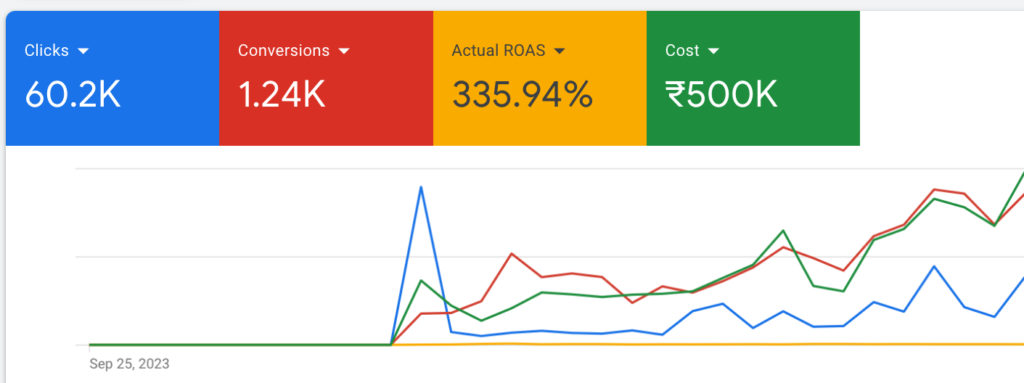Performance Max campaigns are a powerful tool in the Google Ads arsenal, designed to deliver maximum return on investment (ROI). By combining elements of search, display, video, and discovery campaigns, Performance Max campaigns offer a streamlined approach to reaching your target audience across multiple platforms.
In this guide, we’ll delve into the intricacies of setting up and optimizing Performance Max campaigns to ensure you achieve your marketing goals.
Understanding Performance Max Campaigns
Before we dive into the setup process, let’s clarify what Performance Max campaigns are and when to use them:
- All-in-one campaign: Performance Max campaigns are designed to simplify your advertising efforts by combining multiple campaign types into a single entity.
- Conversion-focused: These campaigns are primarily focused on driving conversions, whether it’s leads, sales, or other desired actions.
- Asset-rich: To effectively leverage Performance Max, you’ll need a variety of assets, including headlines, descriptions, images, and videos.
When to Use Performance Max Campaigns
Performance Max campaigns are ideal for businesses that:
- Have clear conversion goals: If you’re looking to generate leads, sales, or other specific actions, Performance Max can help you achieve these objectives efficiently.
- Have a well-established account: While Performance Max can be beneficial for new accounts, it’s generally more effective when your account has a history of conversions.
- Have a variety of assets: As mentioned earlier, Performance Max requires a diverse set of assets to deliver optimal results.
Setting Up a Performance Max Campaign
- Choose Your Objective: Begin by selecting your campaign objective, such as “Leads” or “Sales.”
- Define Your Conversion Goal: Specify the conversion action you want to track, like “Purchase” or “Sign Up.”
- Set Your Bidding Strategy: Determine how you want to bid, whether it’s based on conversions or conversion value.
- Choose Your Target Audience: Define your target audience using location, language, demographics, interests, and other relevant criteria.
- Create Your Assets: Upload your headlines, descriptions, images, and videos to ensure your campaign has a strong visual and textual foundation.
- Set Your Budget: Determine your daily or monthly budget based on your marketing goals and budget constraints.
- Publish Your Campaign: Once you’ve completed the setup process, review your campaign details and publish it to start driving results.
Optimizing Performance Max Campaigns
To maximize your ROI, continuously monitor and optimize your Performance Max campaigns:
- Analyze Performance: Track key metrics like clicks, impressions, conversions, and cost per conversion to identify areas for improvement.
- A/B Test: Experiment with different assets, targeting options, and bidding strategies to find the most effective combinations.
- Leverage Automation: Utilize features like Smart Bidding and automated asset creation to streamline your campaign management.
- Stay Updated: Keep up with the latest updates and best practices for Performance Max campaigns to ensure you’re getting the most out of this powerful tool.
Advanced Performance Max Strategies
- Leverage Audience Signals: Use audience signals like custom audiences and remarketing lists to target specific segments of your audience.
- Utilize Asset Groups: Organize your assets into asset groups to target different audiences or products within a single campaign.
- Optimize for Mobile: Ensure your assets and targeting are optimized for mobile devices to reach the growing number of mobile users.
- Monitor and Adjust: Regularly review your campaign performance and make necessary adjustments to improve results.
Case Study: A Successful Performance Max Campaign

Client Background
- Skincare brand seeking to enhance online presence and sales
Campaign Goals
- Increase ROAS
- Drive traffic and conversions
- Improve brand visibility
- Enhance customer acquisition
Strategy and Implementation
- Launched a Performance Max campaign
- Leveraged Google’s machine learning for optimization across multiple platforms
Key Performance Indicators (KPIs)
- Clicks
- Conversions
- Actual ROAS
- Cost
Results
- Within three months, doubled ROAS
- Increased conversions
- Improved brand visibility
Key Success Factors
- Strategic targeting
- Compelling creative
- Continuous optimization
- Leveraging Performance Max features
Conclusion
- Performance Max proved effective in driving growth and achieving marketing goals for the skincare client.
Performance Max campaigns offer a comprehensive solution for businesses seeking to drive conversions and maximize ROI. By following the steps outlined in this guide and continuously optimizing your campaigns, you can effectively reach your target audience and achieve your marketing goals.
Additional Resources
- Google Ads Help Center: https://support.google.com/google-ads/?hl=en
- Google Ads Blog: https://blog.google/products/ads-commerce/
- Google Performance Max Campaign: https://support.google.com/google-ads/answer/10724817?hl=en
Frequently Asked Questions
- What is the difference between Performance Max and Search campaigns? Performance Max campaigns are more versatile, combining elements of search, display, video, and discovery campaigns. Search campaigns are specifically focused on search engine results pages.
- Can I use Performance Max for brand awareness? While Performance Max is primarily focused on conversions, you can still use it for brand awareness by targeting relevant keywords and audiences.
- How often should I optimize my Performance Max campaigns? It’s recommended to monitor and optimize your campaigns regularly, at least weekly or bi-weekly.
- Can I use Performance Max for local businesses? Yes, Performance Max is effective for local businesses as it can target users based on location and interests.
By understanding and implementing these strategies, you can effectively leverage Performance Max campaigns to drive growth and success for your business.

